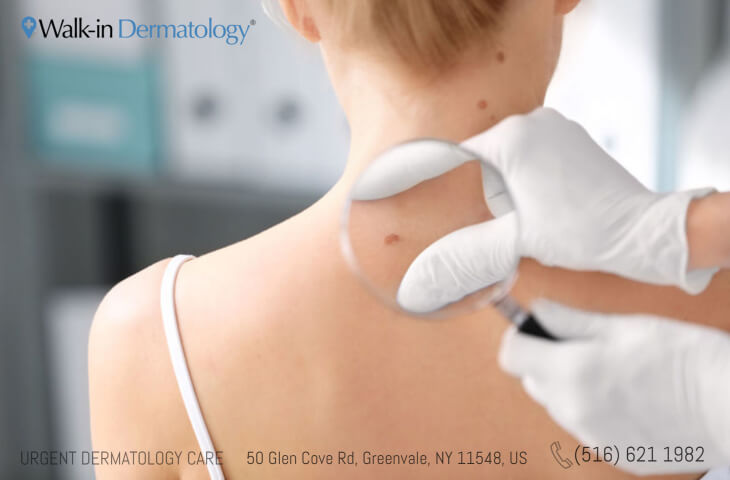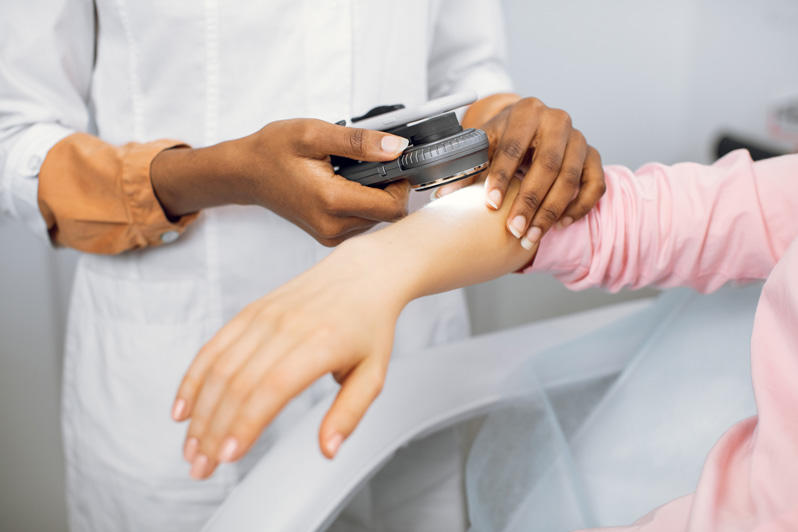Thorough Dermatology Expertise: Addressing Acne Issues, Mole Issues, and Dermatitis Effects
When it involves skin health, extensive dermatology expertise is key; it equips people to take on common skin issues such as acne, mole irregularities, and eczema with confidence. Comprehending acne treatments, acknowledging possible skin cancer cells signs in moles, and managing dermatitis triggers can dramatically improve skin wellness - mole removal. This write-up will certainly discover these topics, providing an informative check out the science behind these typical skin worries - an expedition that promises to enlighten and notify
Understanding the Fundamentals: What Is Acne, Moles, and Dermatitis?
While several people may recognize with the terms acne, moles, and eczema, recognizing what they really are is a various issue completely. Acne is a skin problem identified by inflamed or infected oil glands, often noticeable as acnes or places, mostly on the face, back, and breast. Moles, on the other hand, are tiny skin developments brought on by clusters of pigmented cells; they can show up anywhere on the body and differ in color and dimension. Finally, dermatitis, likewise referred to as atopic dermatitis, is a persistent problem triggering irritated, itchy skin, usually happening in feedback to toxic irritants or irritants. While these problems prevail, they can have varying levels of intensity and influence on an individual's life.
The Scientific research Behind Acne: Reasons, Types, and Therapies
The complicated science behind acne starts with understanding its formation system. This elaborate process, influenced by various variables, results in different sorts of acne. The short article will certainly also touch upon reliable treatments readily available to manage and treat this usual skin problem.
Acne Development Device
An overwhelming majority of individuals will certainly experience the usual skin disease called acne at some time in their lives. Acne development begins with the overflow of sebum, an oily material produced by sebaceous glands in the skin. This excess sebum, in addition to dead skin cells, obstructs the skin's pores. When these blocked pores become contaminated with Propionibacterium acnes, a bacterium normally existing on the skin, swelling occurs, leading to visible acne. There are different sorts of acne, consisting of blackheads and whiteheads (non-inflammatory), and papules, pustules, nodules, and cysts (inflammatory) Hormone changes, especially during adolescence or menstrual cycle, can aggravate acne by setting off boosted sebum manufacturing. Understanding this device is important for making effective therapies, a subject to be gone over later. eczema specialist.

Reliable Acne Therapies
Virtually everybody will grapple with acne at some factor, making a clear understanding of efficient acne treatments crucial. Numerous treatments target various elements of acne, such as inflammation, oil production, and bacteria. It's important to keep in mind that not all therapies will work for every person, as acne's reasons and seriousness vary.
Mole Issues: Identification, Exam, and When to Seek Medical Focus
Moles, common skin developments, require careful identification and normal assessment for optimal skin health (acne treatment). Recognizing the regular look of one's moles, along with any type of adjustments that might happen, is crucial. Motivate medical focus should be sought when certain signs, which will be gone over, are detected
Recognizing Mole Identification
Just how does one compare a safe mole and one that may call for medical interest? Comprehending the characteristics of typical moles is critical. A typical mole is usually round or oblong, has a smooth edge, and is no bigger than 6mm in diameter. The shade ought to correspond and can differ from pink, tan, brown, or black. Moles generally show up during childhood years or teenage years, and by their adult years, lots of people have between 10 to 40 moles. Moles that alter in dimension, shape, or shade, come to be itchy or hemorrhage, or show up after age 30 can be disconcerting. These abnormalities don't instantly great site show skin cancer cells yet are factors to get in touch with a skin specialist. Comprehending mole recognition is the initial step in skin wellness management.
Performing Regular Mole Assessments

Identifying Important Clinical Indicators
When should one look for medical focus worrying moles? It is important to speak with a dermatologist once uncommon features are seen. These may include asymmetry, irregular borders, differing shades, a size larger than 6mm, or developing size, shape, or color. Understood as the ABCDE's of mole assessment, these adjustments might point to deadly melanoma, a lethal form of skin cancer. In addition, any blood loss, itching, or non-healing sores connected with moles necessitate prompt medical interest. An individual ought to additionally be careful if new moles show up after the age of 30 or if there's an abrupt boost in the number of moles. Regular self-examinations combined with specialist assessments guarantee very early discovery and reliable treatment of prospective skin problems.
Eczema Explained: Reasons, Symptoms, and Handling Flare-Ups
Although dermatitis might look here look like a simple skin irritation to the untrained eye, it is, actually, a complicated dermatological problem with a wide range of possible causes. Dermatitis, also referred to as atopic dermatitis, is generally triggered by a mix of hereditary and environmental elements. Signs can vary from light dryness and irritation to severe rashes and inflammation. Triggers may range individuals, however typical ones consist of allergens, irritants, and stress. Handling eczema typically involves recognizing and staying clear of triggers, preserving a great skin care regimen, and making use of recommended treatments. Due to the chronic nature of dermatitis, flare-ups may still occur even with careful management. The key is to deal with these flare-ups quickly to stop getting worse signs and symptoms.
Practical Skin Treatment Tips to Prevent and Manage Acne, Moles, and Dermatitis
Recognizing and attending to skin problems such as acne, moles, and dermatitis call for functional and efficient skin treatment routines. A well balanced diet plan abundant in antioxidants can boost skin health and wellness and lower inflammation, potentially lowering acne and eczema intensity. Regular skin checks help in early mole detection, possibly preventing skin cancer cells.
Expert Dermatology Treatments: A Review of Modern Solutions
Skin doctors today have a wide array of efficient treatment alternatives to deal with various skin problems. With moles, specialist elimination is done if they present a health risk. All these treatments are under the professional guidance and treatment of skin specialists, ensuring safe and efficient management of skin problems.
Final thought
Recognizing dermatological problems like acne, mole irregularities, and eczema is crucial for effective therapy. Acne administration calls for expertise of different treatment alternatives, while mole evaluation can cause very early detection of skin cancers cells. Eczema monitoring involves determining triggers and executing appropriate therapies. Therefore, comprehensive dermatology knowledge is important for Continued stopping and handling these skin problems, emphasizing the requirement for expert dermatologist care to boost skin wellness.
Comments on “Seek advice from an experienced eczema specialist for effective management of your eczema.”